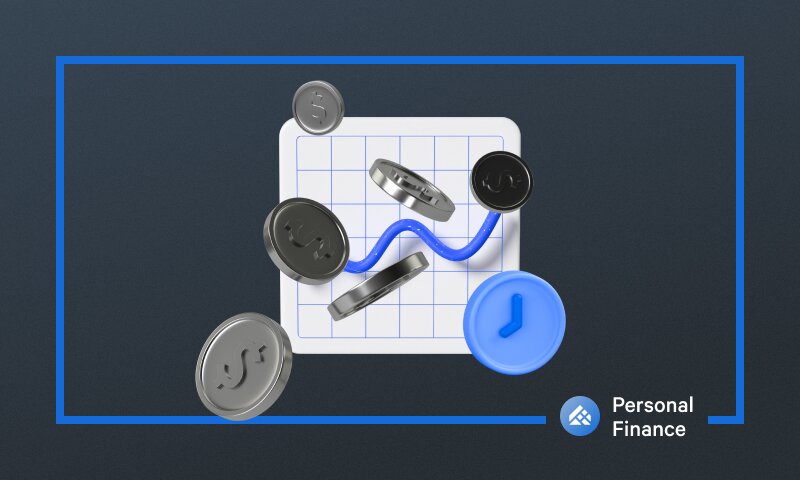Retirement planning is a crucial aspect of personal finance that often takes a back seat in our busy lives. Many of us delay thinking about retirement, assuming it's something to worry about later. But the truth is, the earlier you start planning, the more secure your retirement will be.
While retirement planning is complex, a solid understanding of the basics can help you start on the right path.
The Importance of Starting Early
Time is your greatest ally in building a substantial retirement fund. The power of compounding, where your earnings generate additional earnings, is a game-changer. By saving as soon as possible, you allow your money to grow exponentially over the years.
The Compounding Effect
The first thing to consider is the compounding effect. Compound interest is calculated on the initial principal and the accumulated interest. In other words, it's interest on interest. Over time, compound interest can lead to exponential growth of an investment or debt.
Here’s an example. Imagine you invest $100 every month at an annual interest rate of 7%:
- Year One: $1,200
- Year Five: $6,900
- Year 10: $16,597
- Year 20: $49,194
- Year 30: $113,352
Time in the Market vs. Timing the Market
Next, consider how time in the market can impact your strategy beyond compound interest. Starting to save for retirement early is crucial due to the principle of "time in the market vs. timing the market." This concept highlights the significant advantages of consistently investing over a long period rather than trying to predict and time the market perfectly.
Mitigating Risk
Attempting to time the market involves predicting the perfect moment to buy and sell investments. However, consistently forecasting market movements is incredibly challenging, if not impossible. By starting early and staying invested, you mitigate the risk of trying to time the market. Even during periods of market volatility, maintaining a long-term perspective allows you to ride out downturns and benefit from eventual recoveries.
Dollar-Cost Averaging
Investing regularly over time through methods like dollar-cost averaging is more manageable and less stressful than trying to time the market. With dollar-cost averaging, you invest a fixed amount of money at regular intervals, regardless of market fluctuations. This approach helps smooth out the effects of market volatility and can result in a lower average cost per share over time.
Emotional Discipline
Timing the market often leads to emotional decision-making driven by fear or greed. Fear of missing out (FOMO) may cause individuals to buy when prices are high, while fear of loss may prompt selling during market downturns. Starting early and staying invested encourages emotional discipline by focusing on long-term goals rather than short-term market fluctuations.
Maximizing Returns
You maximize your potential returns by saving for retirement early and remaining invested over the long term. While market timing may occasionally yield short-term gains, the risk of missing out on substantial growth opportunities outweighs the potential benefits. Consistently investing over time can allow you to capture the overall upward trajectory of the market and benefit from its long-term growth.
Retirement Savings Vehicles
When it comes to where to stash your retirement funds, you have options. Using more than one savings vehicle to reach your goals may benefit you. A certified financial planner can review your options if you need help deciding which to choose.
Employer-Sponsored Retirement Plans
Many employers offer retirement plans, such as 401(k)s, as part of their benefits package. A 401(k) allows you to contribute a portion of your salary before taxes, reducing your taxable income while building your retirement fund.
These plans can provide an excellent opportunity to save for retirement. Some 401(k)s have added advantages like employer matching contributions. With an employer match, your employer will match your contribution up to a certain percentage, doubling your contribution.
Remember that there are laws around dipping into these accounts before retirement age. And if you take pre-retirement income early, there could be tax implications.
Individual Retirement Accounts (IRAs)
In addition to employer-sponsored plans, individual retirement accounts (IRAs) are an excellent tool for retirement savings. IRA accounts come in two main types: Traditional and Roth.
Traditional IRAs
Contributions to a traditional IRA are often tax-deductible, reducing your taxable income for the years you contribute. However, withdrawals during retirement are subject to income tax. Traditional IRAs can be ideal for those anticipating a lower tax bracket during retirement. Be sure to speak with your tax advisor to best utilize these savings.
Roth IRAs
In contrast, Roth IRA contributions are made with after-tax dollars, meaning they don't provide an immediate tax deduction. However, qualified withdrawals, including earnings, are tax-free during retirement. Roth IRAs can be advantageous for individuals expecting to be in a higher tax bracket in retirement.
Diversification: The Key to Long-Term Growth
The importance of diversification cannot be overstated. It can be a crucial mechanism for managing risk and optimizing long-term growth potential.
Here are some of the benefits:
Risk Mitigation
Different asset classes tend to perform differently under various market conditions. For instance, stocks may offer higher returns over the long term but are also subject to significant volatility. On the other hand, bonds typically provide more stability but may offer lower returns.
By spreading investments across multiple asset classes, you can reduce the impact of a decline in any single asset class on your overall portfolio. This helps cushion against market downturns and limits the potential for catastrophic losses.
Maximizing Returns
Diversification helps minimize risk and maximize returns. Asset classes have performance cycles — while one may be underperforming, another might thrive. By holding a diversified portfolio, you increase the likelihood of capturing the upside potential of different asset classes at various times. Over the long term, this can lead to more consistent returns and smoother wealth accumulation.
Preserving Capital
For retirement savings, capital preservation is paramount. Diversification plays a vital role in safeguarding the capital you've accumulated over the years. By spreading investments across different assets, you can reduce your portfolio's vulnerability to specific economic or market events.
Adaptability to Changing Market Conditions
Market conditions are dynamic and unpredictable. What may be a winning investment today could become a losing proposition tomorrow. Diversification can enable your portfolio to adapt to changing market environments. It provides flexibility, allowing you to navigate different market cycles and economic conditions without being overly exposed to any single risk factor.
While understanding the concept of diversification is crucial, implementing it effectively requires expertise. Seeking advice from a financial planner can be invaluable in constructing a well-diversified retirement portfolio tailored to your specific goals, risk tolerance, and time horizon. A financial planner can help you assess your current financial situation, determine an appropriate asset allocation strategy, and periodically rebalance your portfolio to ensure it remains aligned with your objectives.
Planning for Retirement: A Holistic Approach
Building your retirement plan isn’t a one-and-done financial move. Taking a holistic approach can help.
Setting Retirement Goals
Effective retirement planning involves setting clear and realistic goals. Consider factors such as the lifestyle you envision during retirement, expected expenses, and potential healthcare costs.
Understanding your retirement goals will guide your savings strategy and help determine the level of risk you're comfortable taking.
Emergency Fund: A Safety Net for Retirement
Building an emergency fund is a critical component of your retirement savings plan. Unexpected expenses can sometimes arise, and having a financial safety net ensures you won't need to dip into your retirement savings during challenging times.
Regularly Review and Adjust
Retirement planning is not a set-it-and-forget-it endeavor. It's essential to regularly review your portfolio, reassess your financial goals, and make adjustments as needed. Your retirement plan should adapt to life circumstances, market conditions, and evolving personal priorities.
Early retirement planning lays the foundation for a secure financial future. Understanding the power of compounding, the benefits of time in the market, and the importance of emotional discipline can help you confidently navigate the complexities of retirement savings.
You could build a resilient portfolio by utilizing retirement savings vehicles like employer-sponsored plans and IRAs and embracing diversification for long-term growth and risk management.







